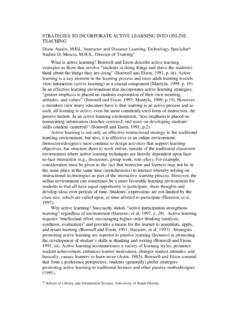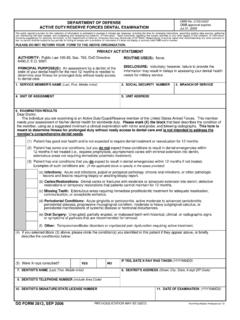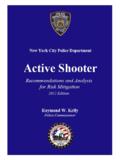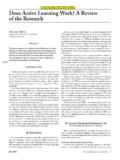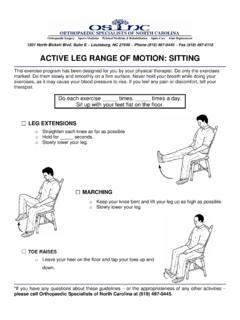Transcription of DEFINITION OF ACTIVE PHARMACEUTICAL …
1 Working document July 2011. RESTRICTED. DEFINITION OF ACTIVE PHARMACEUTICAL . INGREDIENT. REVISED DRAFT FOR COMMENT. Should you have any comments on the attached revision, please send these to Dr S. Kopp, Manager, Medicines Quality Assurance Programme, Quality Assurance and Safety: Medicines, World Health Organization, 1211 Geneva 27, Switzerland;. fax: (+41 22) 791 4730 or e-mails: with a copy to Ms Marie Gaspard by 10 September 2011. We will now send out our working documents electronically and they will also be placed on the Medicines web site for comment. If you do not already receive our draft specifications please let us have your e-mail address (to and we will add it to our electronic mailing list.)
2 _____. World Health Organization 2011. All rights reserved. This draft is intended for a restricted audience only, the individuals and organizations having received this draft. The draft may not be reviewed, abstracted, quoted, reproduced, transmitted, distributed, translated or adapted, in part or in whole, in any form or by any means outside these individuals and organizations (including the organizations' concerned staff and member organizations) without the permission of the World Health Organization. The draft should not be displayed on any web site. Please send any request for permission to: Dr Sabine Kopp, Medicines Quality Assurance Programme, Quality Assurance and Safety: Medicines, Department of Essential Medicines and PHARMACEUTICAL Policies, World Health Organization, CH-1211 Geneva 27, Switzerland.
3 Fax: (41-22) 791 4730; e-mail: The designations employed and the presentation of the material in this draft do not imply the expression of any opinion whatsoever on the part of the World Health Organization concerning the legal status of any country, territory, city or area or of its authorities, or concerning the delimitation of its frontiers or boundaries. Dotted lines on maps represent approximate border lines for which there may not yet be full agreement. The mention of specific companies or of certain manufacturers' products does not imply that they are endorsed or recommended by the World Health Organization in preference to others of a similar nature that are not mentioned. Errors and omissions excepted, the names of proprietary products are distinguished by initial capital letters.
4 All reasonable precautions have been taken by the World Health Organization to verify the information contained in this draft. However, the printed material is being distributed without warranty of any kind, either expressed or implied. The responsibility for the interpretation and use of the material lies with the reader. In no event shall the World Health Organization be liable for damages arising from its use. This draft does not necessarily represent the decisions or the stated policy of the World Health Organization. Working document page 2. SCHEDULE FOR THE ADOPTION PROCESS OF DOCUMENT DEFINITION of ACTIVE PHARMACEUTICAL ingredient Date First draft prepared by Professor June 2011. Dekker for the Prequalification Programme Discussion held during the Informal WHO 12-14 July 2011.
5 Consultation on Specifications for The International Pharmacopoeia and quality control laboratory issues Revised draft circulated for comments to August 2011. the WHO Expert Advisory Panel on the International Pharmacopoeia Consolidation of comments September 2011. Discussion at forty-sixth meeting of the 10-14 October 2011. WHO Expert Committee on Specifications for PHARMACEUTICAL Preparations Further follow-up action as required Working document page 3. DEFINITION OF ACTIVE PHARMACEUTICAL INGREDIENT. Background In many WHO guidelines the following DEFINITION for an ACTIVE PHARMACEUTICAL ingredient (API) (in the singular) is found under the Glossary (for instance it appears three times in the recently published WHO Technical Report Series, No.)
6 961): " ACTIVE PHARMACEUTICAL ingredient (API). Any substance or combination of substances used in a finished PHARMACEUTICAL product (FPP), intended to furnish pharmacological activity or to otherwise have direct effect in the diagnosis, cure, mitigation, treatment or prevention of disease, or to have direct effect in restoring, correcting or modifying physiological functions in human beings.". This DEFINITION implies, for example, that commercially available premixes of APIs (such as the popular amoxicillin + clavulanic acid premix) can be regarded as an API, which is not correct. This DEFINITION thus may lead to misinterpretation. Proposal It is proposed that the above DEFINITION be changed by deleting or mixture of substances , in accordance with the DEFINITION already appearing in WHO Technical Report Series, No.
7 961, Annex 10 (Procedure for prequalification of PHARMACEUTICAL products): " ACTIVE PHARMACEUTICAL ingredient (API). A substance used in a finished PHARMACEUTICAL product (FPP), intended to furnish pharmacological activity or to otherwise have direct effect in the diagnosis, cure, mitigation, treatment or prevention of disease, or to have direct effect in restoring, correcting or modifying physiological functions in human beings.". If this is agreed to, it should be applicable to future WHO documentation or any current documentation whenever revised. Motivation The moment an API is mixed with another API, or with an excipient, it is no more considered an API. This is best illustrated by the guidelines mentioned below.
8 The current draft Guideline on submission of documentation for a multisource (generic). finished PHARMACEUTICAL product (FPP): quality part ( ), line 1944, reads: "For a mixture of an API with an excipient, the blending of the API with the excipient is considered to be the first step in the manufacture of the final product and, therefore, the mixture does not fall under the DEFINITION of an API. The Working document page 4. only exceptions are in the cases where the API cannot exist on its own. Similarly, for a mixture of APIs, the blending of the APIs is considered to be the first step in the manufacture of the final product. Sites for such manufacturing steps should be included in this section.
9 ". Exceptions referred to in the above paragraph are rare and only a few are found in the PhEur, for instance Moxidectin and Streptomycin Sulphate ( stabilizers may be added ). EMA's Note for guidance on start of shelf-life of the finished dosage form (CPMP/QWP/072/96) states (biologicals excluded): "The date of production of a batch is defined as the date that the first step is performed involving combination of the ACTIVE ingredient with other ingredients . For medicinal products consisting of a single ACTIVE ingredient filled into a container, the initial date of the filling operation is taken as the date of production.". It is clear from the above that the DEFINITION of the API should only be with respect to a single substance and should exclude combination of substances.
10 [Note from the secretariat: The proposed change was supported during the informal consultation on specifications for medicines and quality control laboratory issues held on 12-13 July 2011.]. **.











